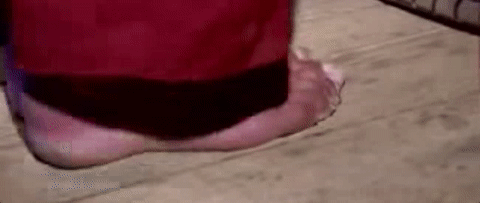McAvennie
Justified & Ancient
- Joined
- Mar 13, 2003
- Messages
- 3,998
https://metro.co.uk/2014/05/26/budd...oorboards-through-20-years-of-prayer-4740267/
I call bullshit on this. Wear and tear on wood might create an indentation over time but it is not creating perfect footprints like that.
A clean print like that would come from standing still and sinking into moist sand, not from standing in the same place on a piece of solid wood.
Am I wrong!?
I call bullshit on this. Wear and tear on wood might create an indentation over time but it is not creating perfect footprints like that.
A clean print like that would come from standing still and sinking into moist sand, not from standing in the same place on a piece of solid wood.
Am I wrong!?



